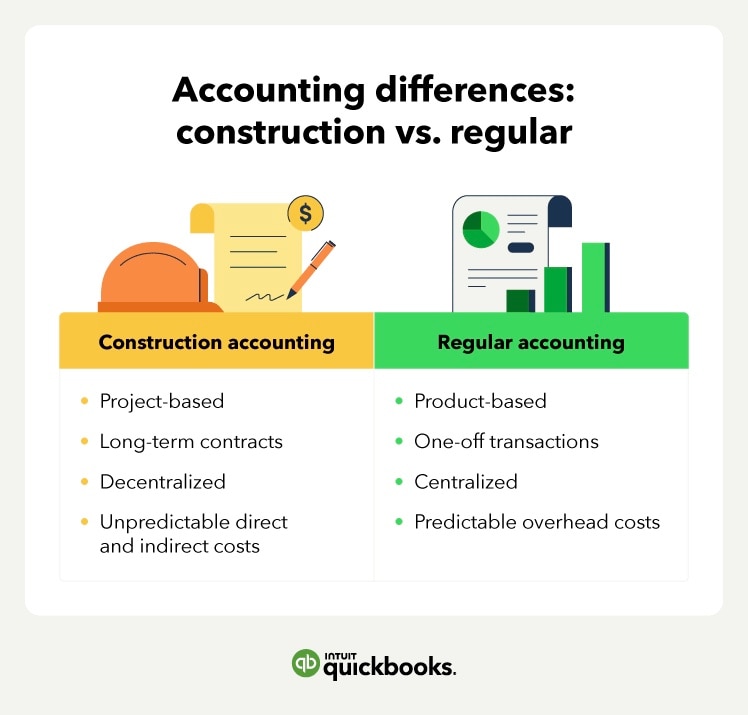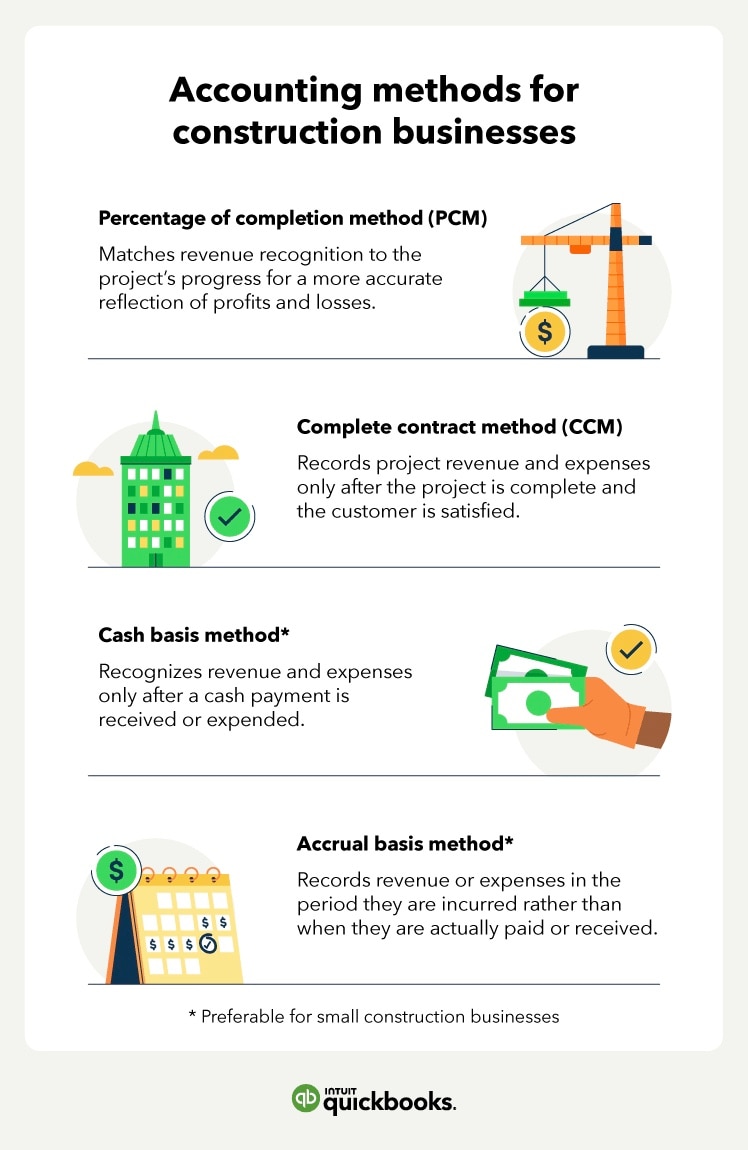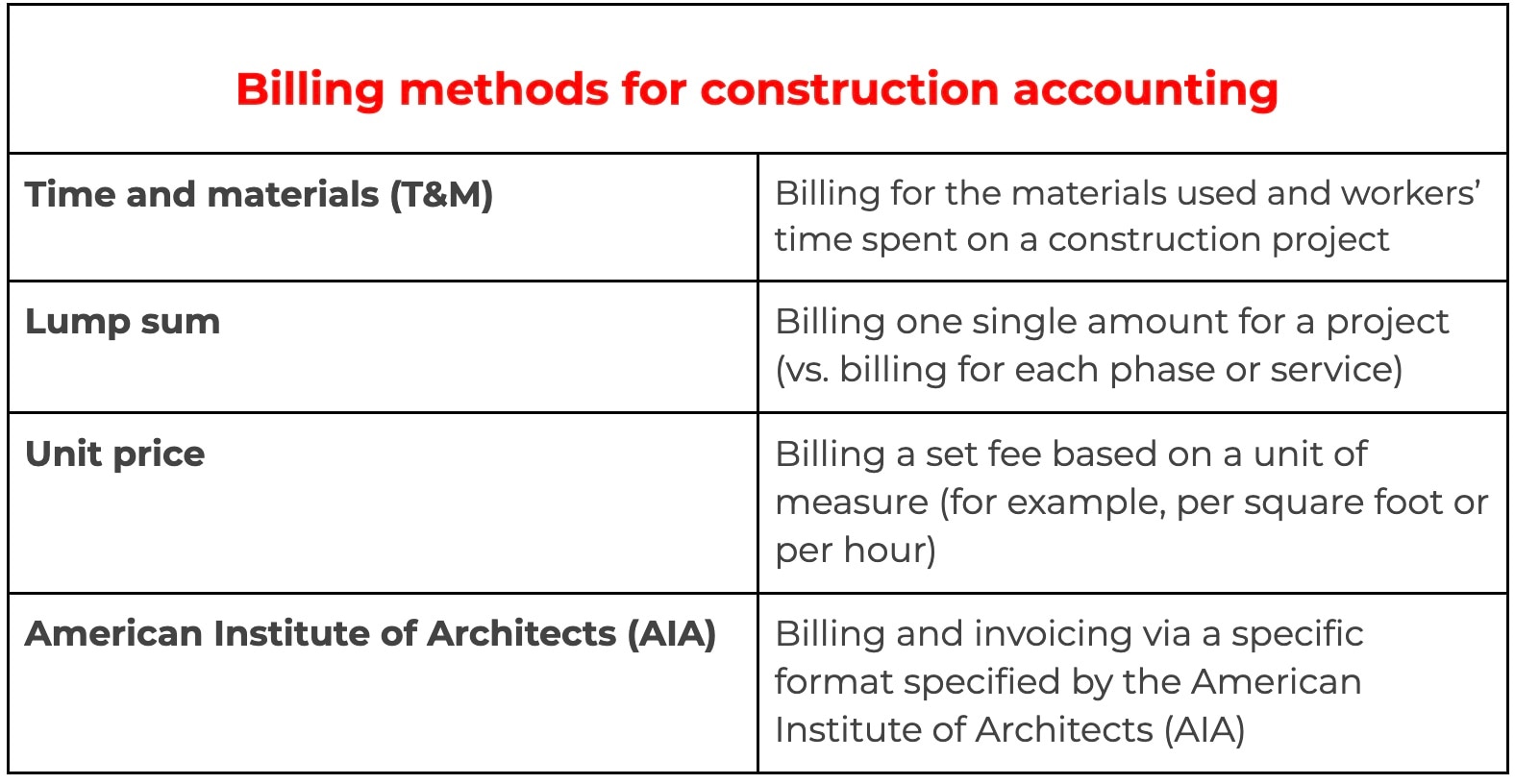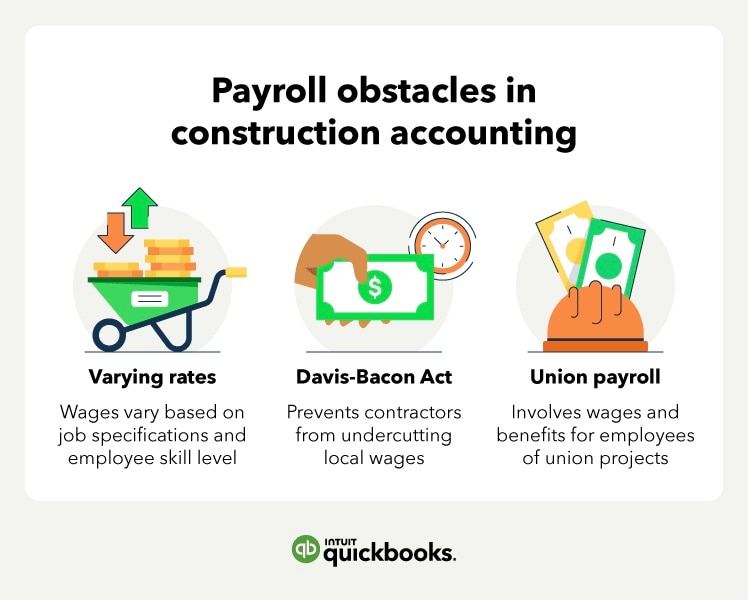Construction company accounting methods
Each construction accounting method provides valuable insight into a project's financial impact that helps ensure projects stay on track, on budget, and succeed. When choosing the right accounting method, you should consider your business’s unique needs and objectives.
Percentage of completion method
The percentage of completion method (PCM) is a method of accounting that records revenue when it has been earned but not yet received.
With the PCM, construction companies can more accurately match their revenue and expenses to the same accounting period, improving their overall financial reporting.
This method is beneficial for ongoing projects that require tracking individual stages of work. It’s helpful when you need to keep an accurate record of your progress and give stakeholders an idea of what to expect in the future.
PCM is common with long-term (and usually larger) construction projects that involve service-type activities, such as:
- Installation
- Replacement
- Repairs
Complete contract method
The complete contract method (CCM) is an accounting method contractors use to record revenue and costs associated with a construction project.
Under the complete contract method, all revenue associated with the project gets recorded after the contract is completed and accepted. All project costs get recorded as expenses only after the contractor has paid them.
This method assumes that a construction company records costs and revenue after they finish the job rather than incrementally throughout the project.
Cash basis method
The cash method of accounting for contractors is a system that records all cash transactions when they occur. This method is often used in construction accounting because it allows contractors to accurately track their cash flow and the progress of their projects.
Under the cash method, you will record expenses as you pay them out, and income gets accounted for when payments are received.
This accounting method is great for small construction businesses that don’t have a high volume of sales or complex transactions.
Accrual basis method
Accrual basis accounting is a method contractors use to record financial transactions that involve revenue or expenses in the period they are incurred rather than when they are paid or received.
This method allows contractors to accurately report their financial position at any given point in time since all transactions are taken into account on an accrual basis.
Accrual accounting is beneficial for contractors because it allows them to track their expenses and earnings in real time, giving them a better understanding of their financial situation and cash flow. It’s especially useful for small construction companies that deal with longer-term contracts and transactions.

















